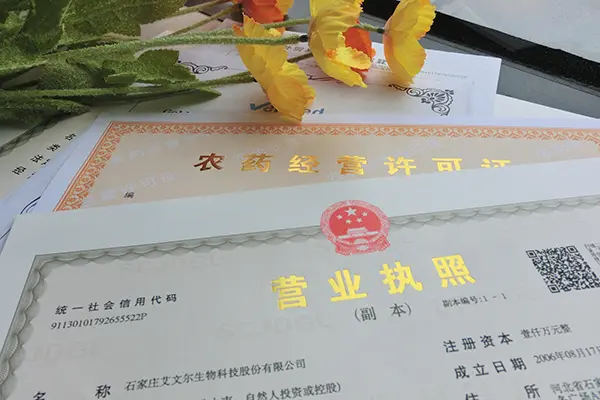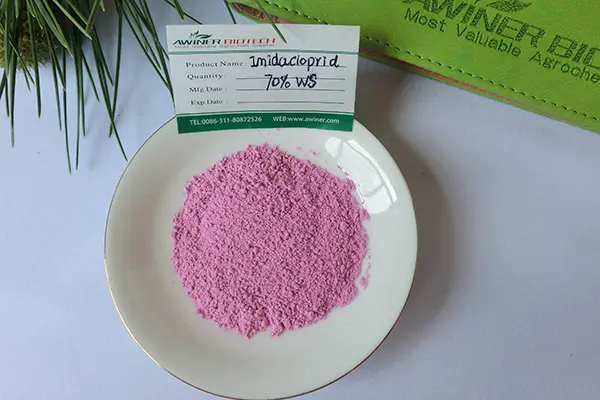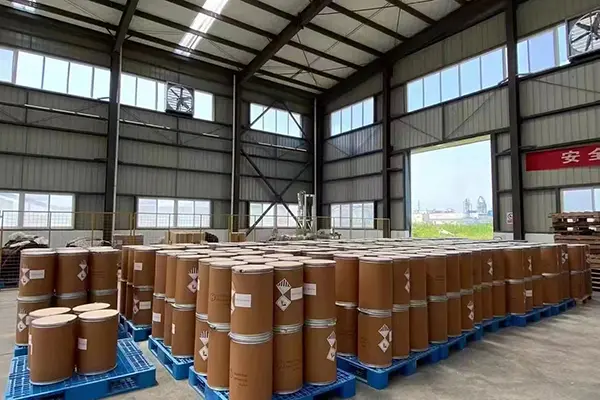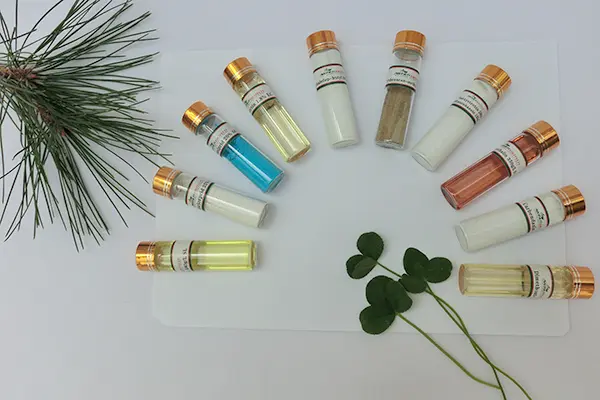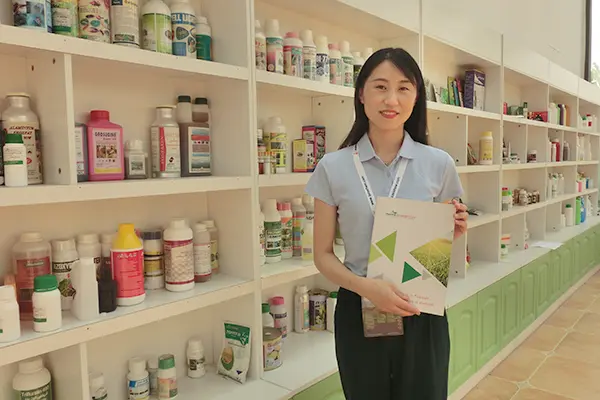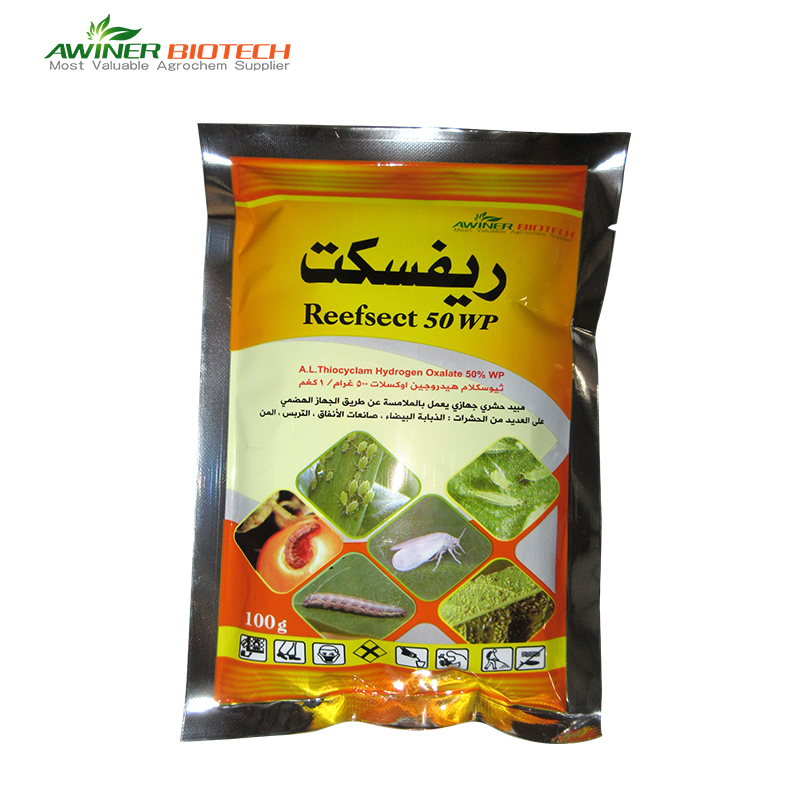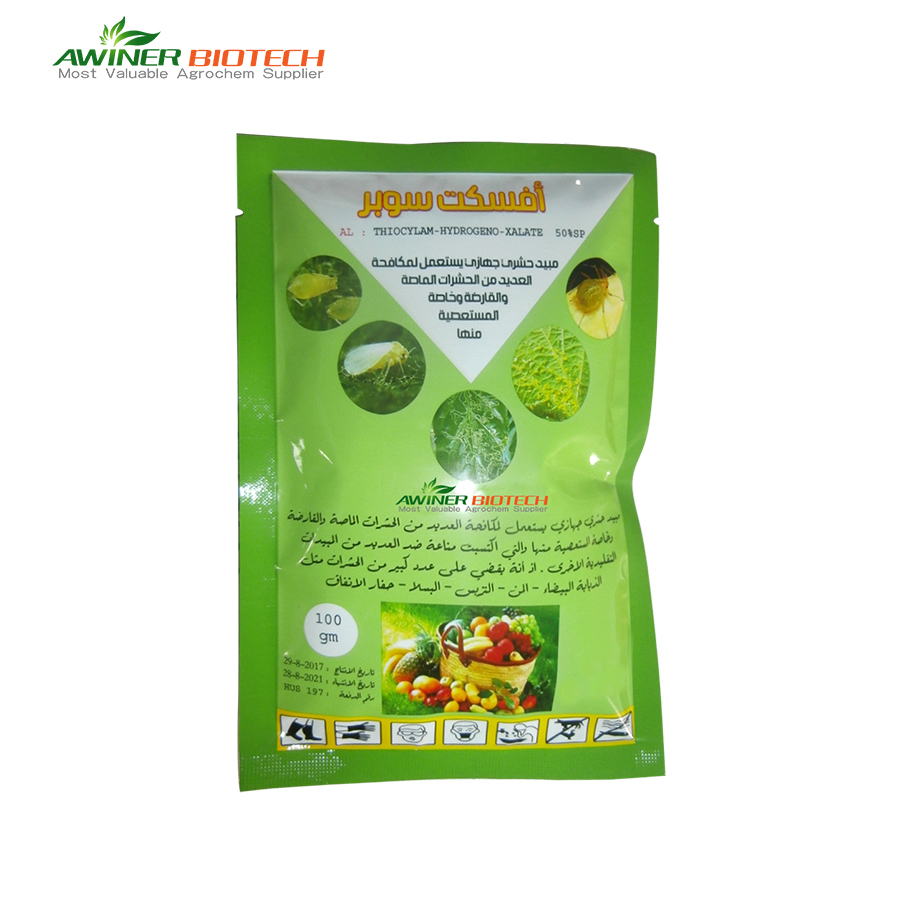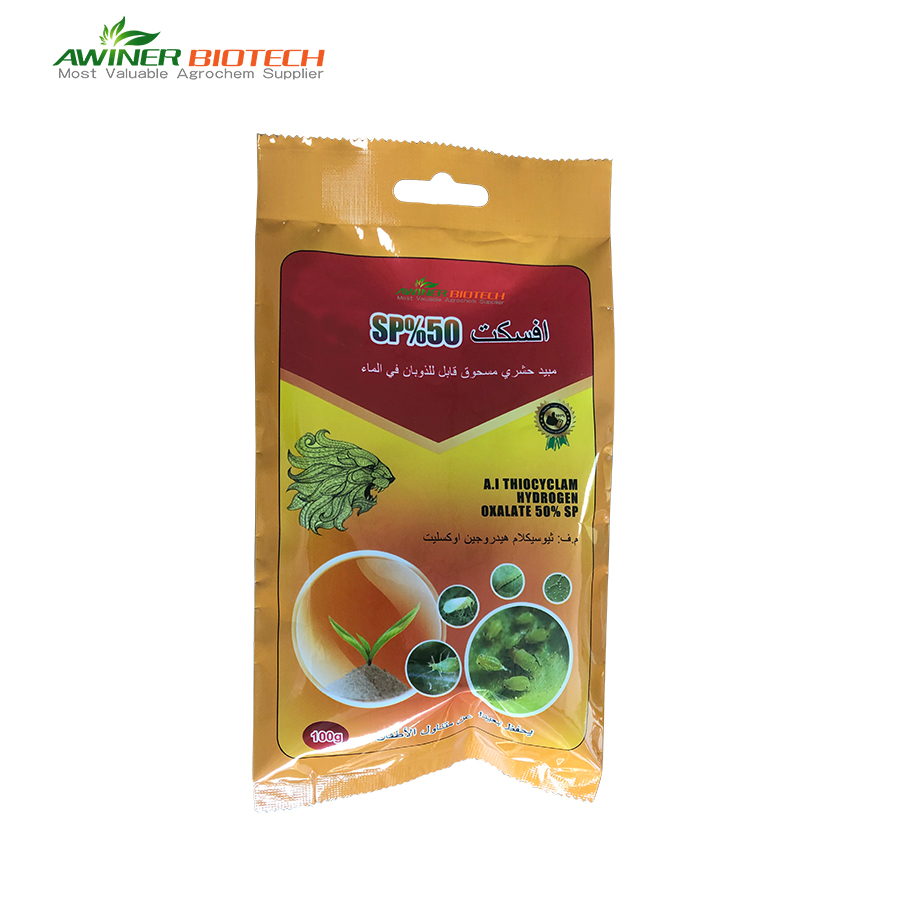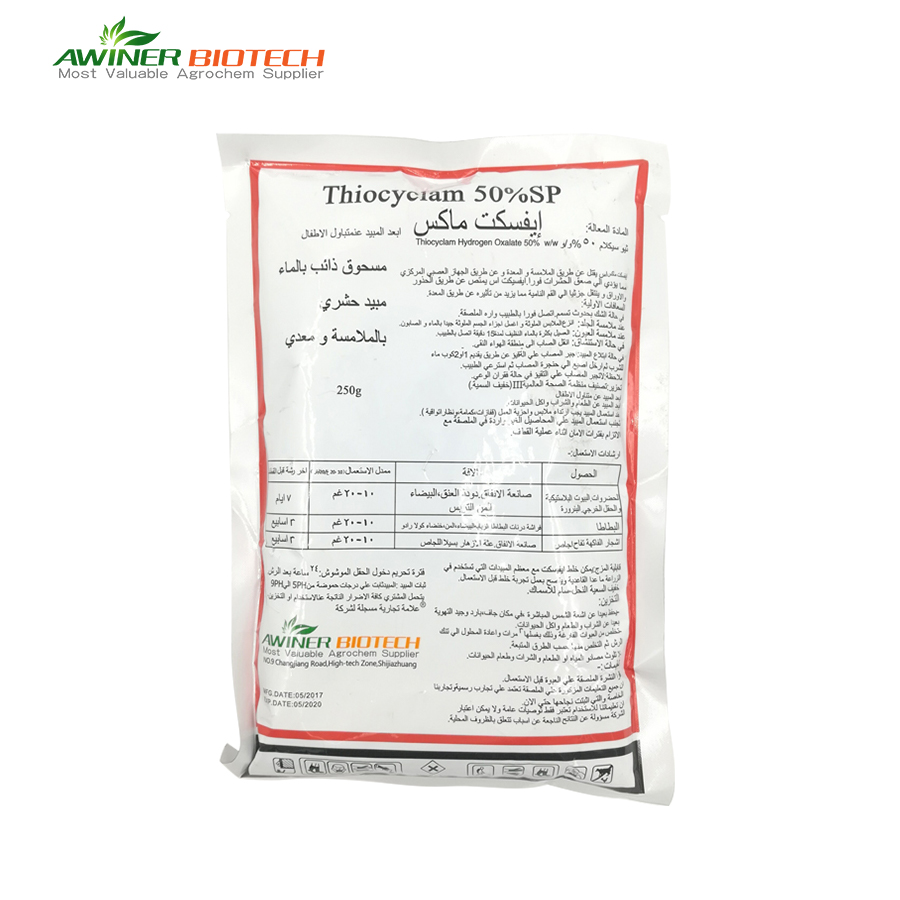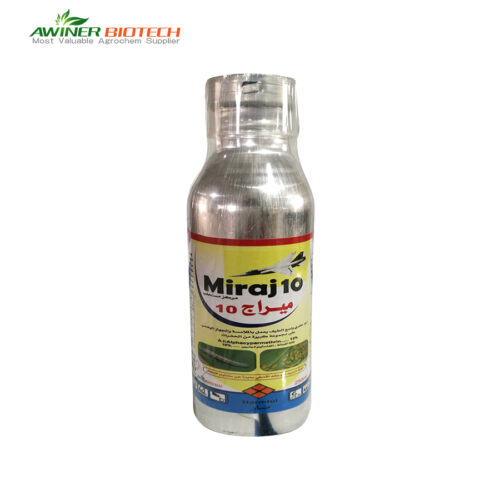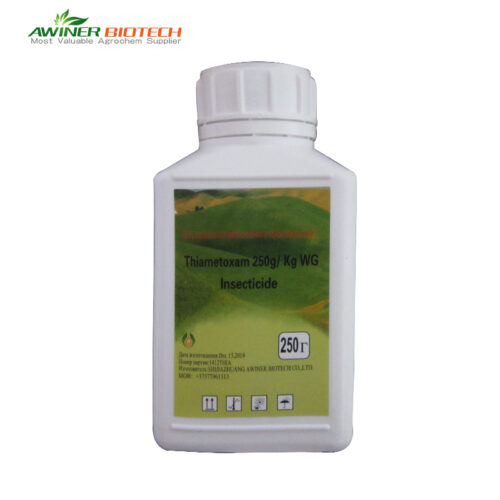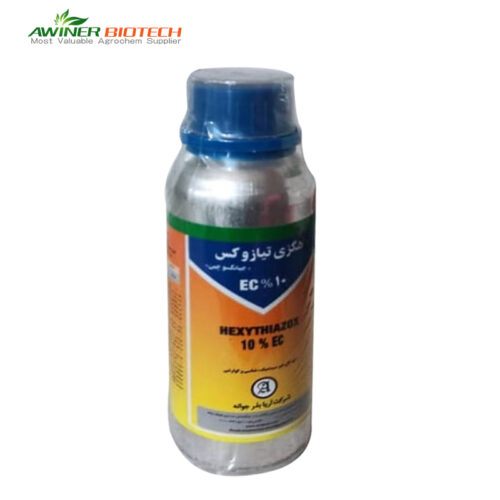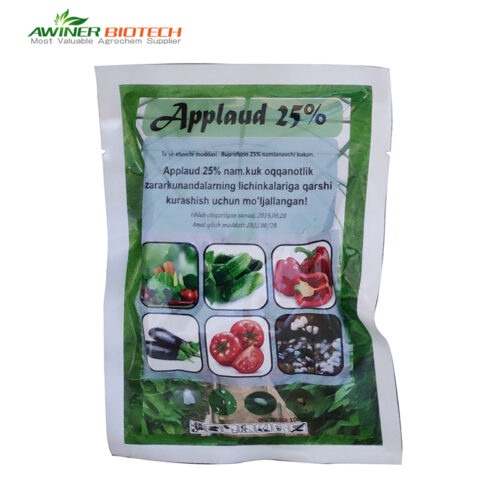Thiocyclam-hydrogen-xalate |
|
| Dosage form | 98%SP;50% WP |
| Packing | Liquid:50ml、100ml、250ml、500ml、1L、5L、10L、20L Solid:10g、50g、100g、250g、500g、1kg、5kg、10kg、25kg |
| Formulation | Customized |
| Label | Customized |
| Crop-Pest | 1. Greenhouse Cucumber – Melonworm, Thrips 2. Rice – Secondary Corn Borer 3. Tobacco – Tobacco Hornworm |
| Certification | SGS、 ISO 、BV |
| Delivery time | 20-30 days |
| Mixture products |
|
| Payment terms |  |
Thiocyclam oxalate is a selective insecticide with gastrotoxic, contact and systemic effects. It can conduct upwards, and its effectiveness in controlling lepidopteran and coleopteran pests lasts for 7 to 14 days.
Thiocyclam hydrogen oxalate is a potent insecticide primarily used in the cultivation of various crops to protect against a wide range of insect pests. This insecticide is highly effective and commonly applied to the following crops:
- Rice: Controls stem borers, leaf folders, and rice hoppers.
- Vegetables: Effective against pests like diamondback moths, leaf miners, and caterpillars in vegetables such as tomatoes, cucumbers, and leafy greens.
- Fruit Trees: Used to manage pests including codling moths, fruit borers, and other harmful insects in orchards.
- Tea Plants: Helps in controlling pests like tea tortrix, tea geometrid, and looper caterpillars.
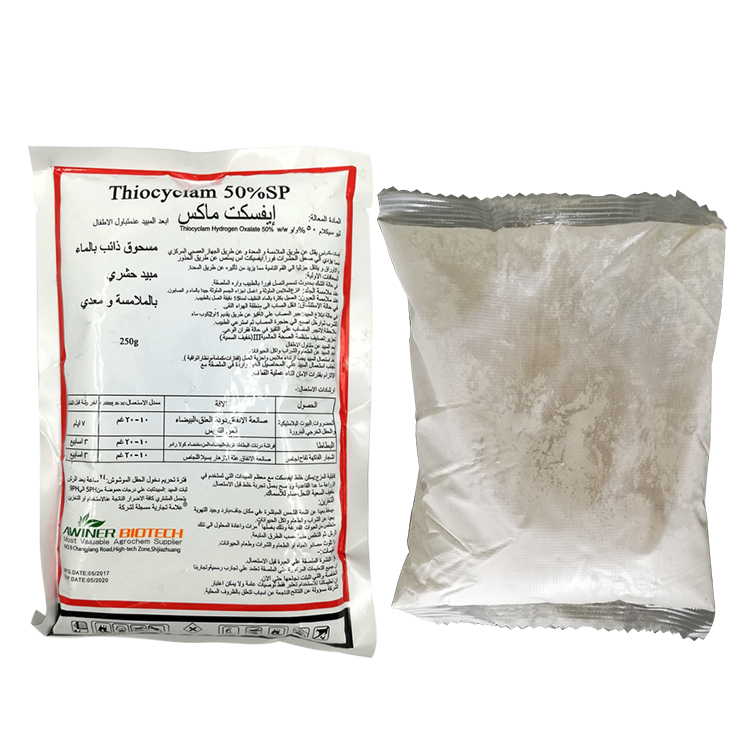 |
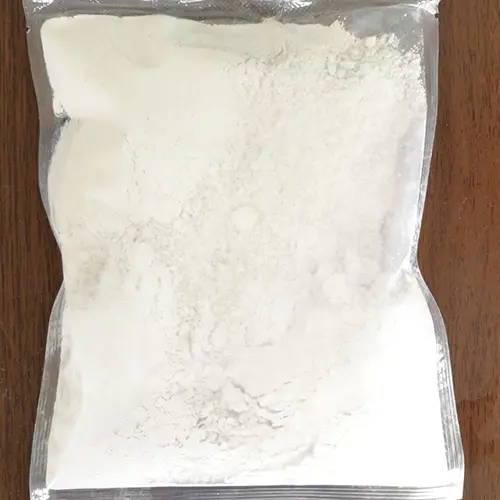 |
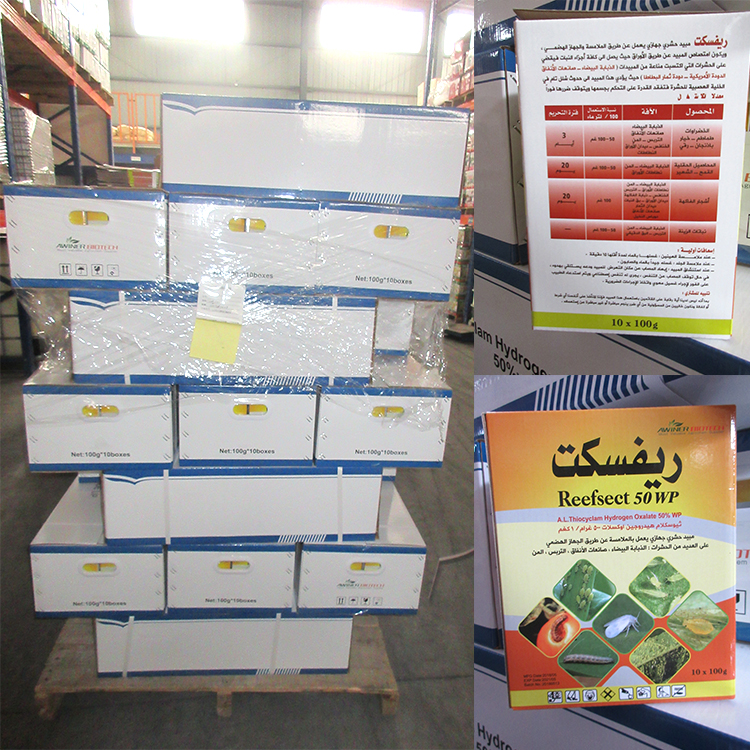 |
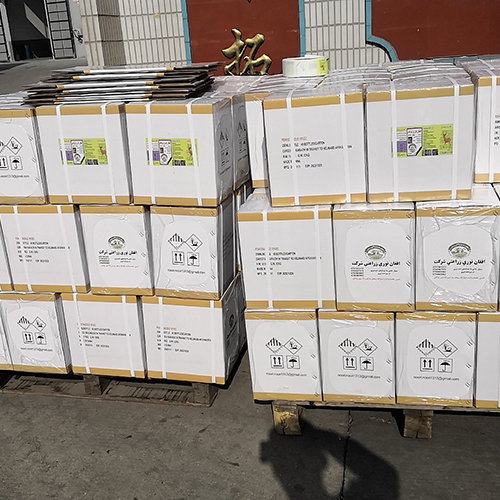 |
Mode of action
Thiocyclam hydrogen oxalate functions by interfering with the nervous system of insects. It acts as a neurotoxin, disrupting the normal function of nerve cells. When insects ingest or come into contact with thiocyclam hydrogen oxalate, it blocks the nicotinic acetylcholine receptors in their nervous system. This interference causes a rapid cessation of feeding, paralysis, and eventually death of the pest.
The effectiveness of thiocyclam hydrogen oxalate and its broad-spectrum activity make it an essential tool for farmers in protecting their crops from devastating insect infestations, ensuring healthier yields and higher quality produce.
<About Awiner Biotech>
